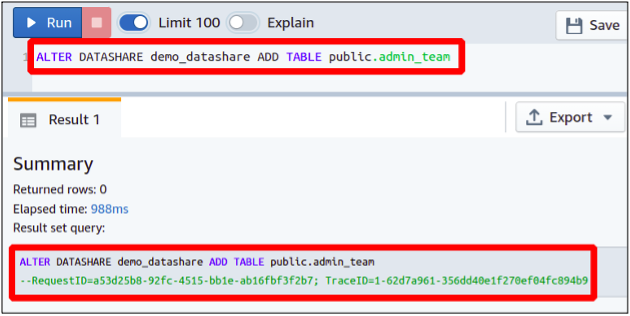


The Amazon Redshift DATEADD function again pretty much does what it says on the tin.
#REDSHIFT DATEADD HOW TO#
Photo by Jon Tyson on Unsplash How to Use the Amazon Redshift DATEADD Function This could be then used to do some analytics around the behaviour of loyal customers as opposed to new customers as an example. A good example of this might be adding a column called ‘days_as_customer’ which is calculated using DATEDIFF. Obviously, in a typical Redshift environment, we will be running this on columns in a table to gain some analytical insight into our data. Giving a result of 141 minutes… okay I need to run I will finish this article later… So if my train is at 12:43 and the time now is 10:22 I could use DATEDIFF to find how long I have to get to the station: The formats which Redshift accepts are as follows:įor timestamps, you can include the time portion as well: It is worth noting that it is best practice to use a consistent format for reproducibility. The DATEDIFF function as mentioned has the power to deal with timestamps as well as dates and can take a number of different formats. This query returns 103, indicating that there are 103 days until your holiday. To calculate the number of days between '' and '' to see how long until your holiday: start: The start date or timestamp string.part: The date or time part to compute the difference (e.g., day, month, year, hour, minute, second) inputted as a string.

This function is especially useful for calculating intervals, such as the number of days between two dates or the hours between two timestamps.

Implementing DATEDIFF in Redshift simply computes the difference between two dates or timestamps. Luckily for us, Amazon Redshift provides handy functions out of the box for us to leverage. Working with dates as a human is typically quite annoying - the Gregorian calendar invented by Pope Gregory XIII in October 1582 clearly did not have date-based analytics in mind when he created this new calendar. We’ve all been there: “So my flight is on the 21st September and it's currently the 10th June…how many days do I need to survive before I go on holiday?.30 days have September, April, June, and November…” How to Use the Amazon Redshift DATEDIFF Function A typical use case of Redshift is for time-based analytics as analysts and engineers often are interested in parsing data over a set period of time to gain valuable point-in-time insights. With Petabyte level storage and lightning-fast querying, it is a highly flexible and performant solution and when combining this with all of the obvious benefits of AWS cloud integrations it can slot very nicely into any AWS cloud platform.Īs such a popular solution the demand for Amazon Redshift expertise is growing, and being able to set yourself apart from the pack is key to securing new roles in the industry and being maximally effective to provide the most value within your team. In this article, we'll dive into the inner workings of these functions and provide examples to help you master them and become a true time-lord! What is Amazon Redshift?Īmazon Redshift is a gold standard in the data industry providing a cloud-based data warehouse service that can scale to handle the data of any organization, large or small. Among these, the Redshift DATEDIFF and DATEADD are two essential tools for manipulating and analyzing dates. Automate ETL/ELT processes and get data flowing from hundreds of potential data sources to a single destination for analytics.Redshift provides a rich set of functions to work with dates and times. With our Runnersolution, you can easily integrate your Redshift data (or other Amazon data) into your data pipeline. Learn how Zuarcan help you manage your Redshift data. It is constructed with this syntax: DATEDIFF ( datepart, ) The Amazon Redshift DATEDIFF function returns the difference between the date parts of two date or time expressions. 6 min read What is the Amazon Redshift DATEDIFF function?.


 0 kommentar(er)
0 kommentar(er)
